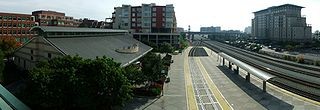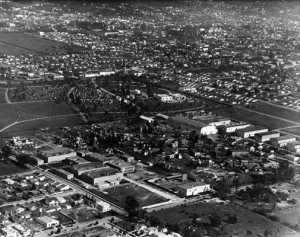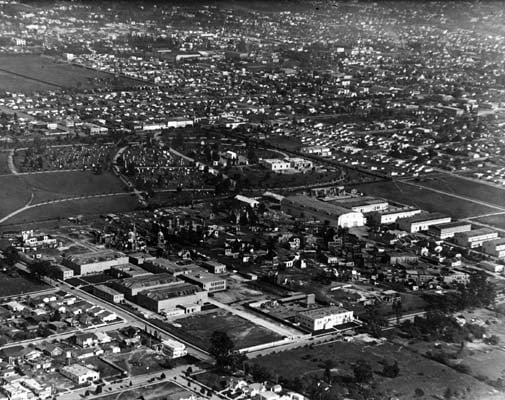First things, first.
I would really like to know if there is such a thing as too much sprawl – suburban, exurban or otherwise? If the adage “everything in moderation” really rings true, then, yes, by definition, there could conceivably be too much sprawl.
Question is: Has the sprawl demarcation line already been established though? And how is one to recognize if and when horizontal growth ever gets to be too much?

In California, apparently, that boundary has already been crossed and prior to 2008, no less. Otherwise, why the passage of California Senate Bill 375 or the Sustainable Communities and Climate Protection Act?
Autumn Bernstein of ClimatePlan, meanwhile, in “Cordova Hills, SB 375, and the Inertia of Sprawl,” sums it this way: “Despite the 2008 meltdown, despite the foreclosure crisis, despite everything we know about changing demographics and housing preferences, and yes, despite SB 375, there is an inertia about sprawl that continues to persist.
“…While SB 375 provides some direct incentives to encourage growth in the right places, it relies on softer tools – such as building regional consensus around Transit Priority Areas and shifting transportation dollars toward those places – to discourage growth in the wrong places.
“…SB 375 has given us an important tool to shift our communities toward sustainability, but there is more work to be done.”
Bernstein’s is but one assessment. But with catch-phrases like “bicycle-, pedestrian- and transit-friendly environments,” “complete streets,” “farm- and open-space preservation,” “location-efficient housing,” “Smart Growth,” “sustainable land-use planning,” and “Transit-Oriented Development,” to name several, why would these terms even exist if sprawl were not an issue? What all this says to me is, yes, sprawl has both gone too far and gone on long enough. But please don’t take my word for it alone.

If more proof’s needed there’s an abundance (if not an overabundance) of horizontal, outward growth, consider this.
“The first decade of this century saw 60 percent population growth in America’s exurbs,” writes Jeff Turrentine in “Neighborhood Watch.” As they added 10 million people to their numbers, the number of road miles driven by Americans increased by nearly 200 billion.”
And that which has prompted that outcome – inefficient land-use planning and implementation, limited housing and transportation choice, in addition to a host of other outdated paradigms – has led to such disappointing if not contemptible unintended consequences as traffic congestion, air pollution and greenhouse gas emissions rise.
The “Neighborhood Watch” author provides yet more evidence of sprawl’s impact. He writes:
“Sprawl destroys the defining character of suburbs by conferring upon them many problems associated with urban areas: crime, congestion, paved-over wilderness. And yet [“Burn Down the Suburbs?” author] Stanley Kurtz [and who has lectured at both the University of Chicago and Harvard] assails urban growth boundaries — which draw a literal line in the sand, then limit development beyond it — as a liberal scheme ‘to force suburban residents into densely packed cities.’ But if that’s true, why did the citizens of conservative Virginia Beach, Virginia, establish one back in 1979? The answer is that their ‘green line,’ which has restricted sprawl to the city’s northern half, has preserved the unique agricultural character of the southern half; as a result, today there are nearly 170 working farms within the city limits. Similarly, these boundaries didn’t seem so sinister to the Tennessee General Assembly, which passed a law in 1998 requiring every independent county in the state to adopt them, explicitly citing a statewide need to ‘minimize urban sprawl.’”
Traversing this road, in aimless, boundless, haphazard fashion and without serious consideration or forethought of the consequences of doing such, is tantamount to painting oneself into a corner.
As I see it, a new, far more sustainable avenue can be taken, one that promises to help undo at least some of the damage already done and which puts development on track to a state of good repair. As to which route is taken, and I know this sounds cliché, but the choice really is ours.
Breaking news
At Smart Growth America on its Web site in the May 8, 2013 news item “Senators and Representatives sign on to letters supporting the Partnership for Sustainable Communities,” in no uncertain terms, Jessica Holmberg stated:
“In addition, 16 Senators signed a separate letter supporting EPA’s Smart Growth Program. Author Senator Brian Schatz (D-HI) addresses the value the program provides to communities:
The EPA smart growth programs works with local, state, and regional decision-makers by providing technical expertise and resources to help communities grow their economies, protect the environment and public health, and improve their existing infrastructure. As more communities face increasing development challenges, the EPA’s smart growth program provides a valuable service that is voluntary and market-driven to strengthen and revitalize towns, cities and localities.”
At long last, things may finally be looking up – and not out – for a change!
Lower image above: Los Angeles Public Library Photo Collection
– Alan Kandel
